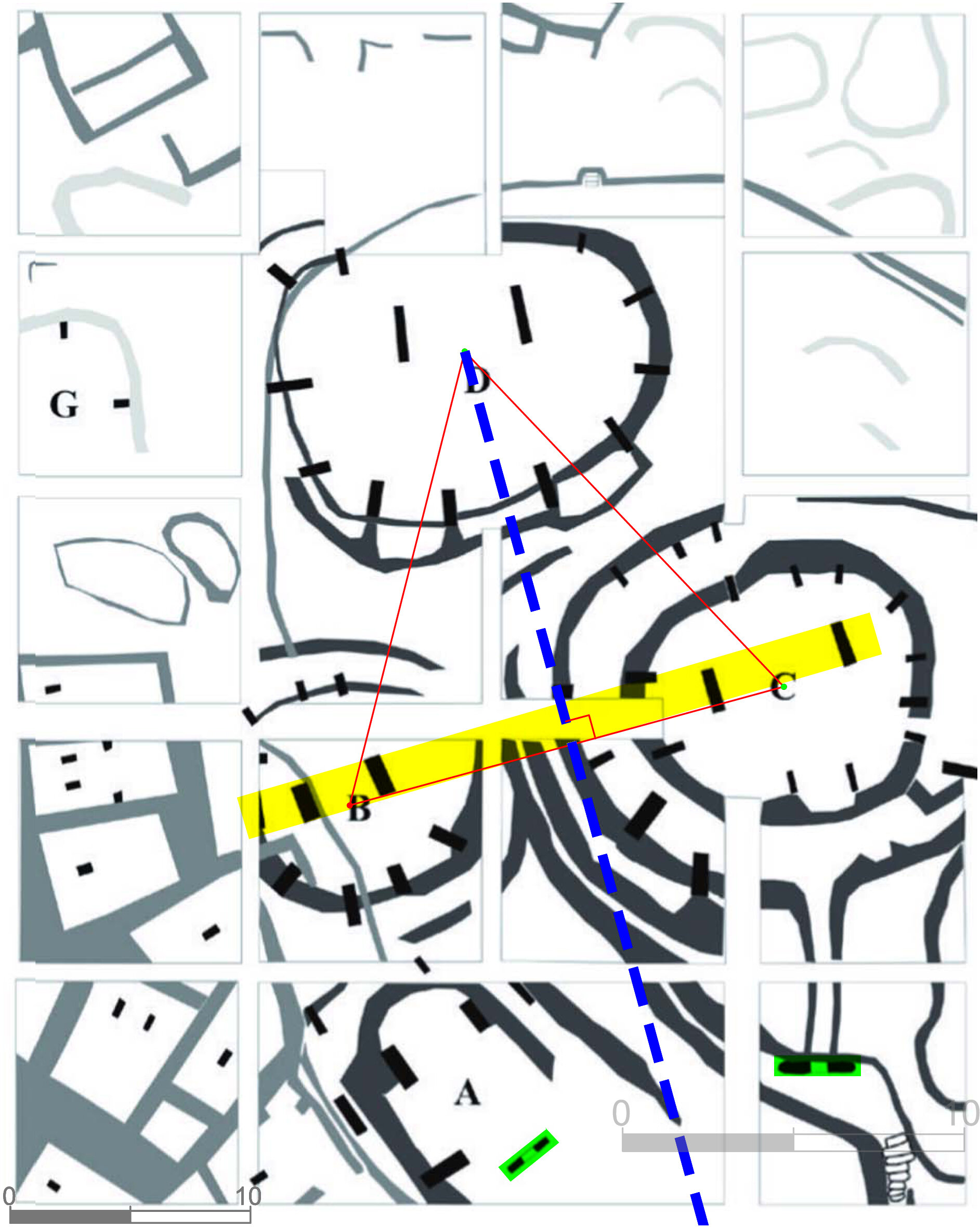Here is what I quoted:
"The formula suggests that, extending outward, each planet should be approximately twice as far from the Sun as the one before."
To which I said:
"If the Earth was at the asteroid belt it would fit the formula."
I specifically left out the 'adding 4 part' because that was added to the formula to account for Earth being here instead of the asteroid belt.
I don't understand why you claim that the "adding 4 part" was added for this reason. I can see no evidence of such a motivation. The very earliest formulation of Bode's Law is by Christian Wolff, in
Vernuenftige Gedanken von den Absichten der natuerlichen Dinge. He writes (p. 140 of the 1726 edition):
The planets that move around the Sun are located very far from one another. If one divides the distance of the Earth from the Sun into 10 parts, the distance of Mercury takes 4 of it up, that of Venus 7, that of Mars 15, that of Jupiter 52, that of Saturn 95. If one accordingly imagines that the centres of all planets are in one line, which is drawn from the centre of the Sun to the centre of Saturn, and the whole line is divided into 95 parts, then at the end of the fourth part is Mercury, at the end of the seventh part is Venus, at the end of the tenth is the Earth, at the end of the fifteenth is Mars, at the end of the fifty-second is Jupiter, and finally at the end of the ninety-fifth is Saturn. Thus Mercury and Venus are separated by 3 parts, Venus and the Earth also by 3, the Earth and Mars by 5, Mars and Jupiter by 37, Jupiter and Saturn by 43 parts.
The formulation of an actual law to describe these values occurred in a paragraph that was inserted into the German translation of Charles Bonnet's
Contemplation de la nature. The translator was Johann Daniel Titius, and his insertion went like this (pp. 7-8 of the 1766 edition):
Take notice of the distances of the planets from one another, and recognise that almost all are separated from one another in a proportion which matches their bodily magnitudes. Divide the distance from the Sun to Saturn into 100 parts; then Mercury is separated by 4 such parts from the Sun, Venus by 4+3=7 such parts, the Earth by 4+6=10, Mars by 4+12=16. But notice that from Mars to Jupiter there comes a deviation from this so-exact progression. From Mars there follows a space of 4+24=18 such parts, but so far no planet or satellite was sighted there. But should the Lord Architect have left that space empty? Not at all. Let us therefore assume that this space without doubt belongs to the still-undiscovered satellites of Mars; let us also add that perhaps Jupiter still has around itself some smaller ones which have not been sighted yet by any telescope. Next to this for us still-unexplored space there rises Jupiter's sphere of influence at 4+48=52 parts; and that of Saturn at 4+96=100 parts. What a wonderful relation!
Bode basically stole this formulation for his work, which became the standard.
You will notice that in these original formulations of the law there is absolutely no suggestion that the planets' distance from the Sun would double each time if the Earth were moved to between Mars and Jupiter. The discrepancy that Titius tries to account for is not the position of the Earth, but the absence of any planet at all between Mars and Jupiter, which should be there according to the progression that he identifies. This was of course shortly before the discovery of Uranus (1781) and Ceres (1801), which fitted the pattern - Ceres in particular seeming to vindicate the prediction of a planet between Mars and Jupiter.
So this idea that the "adding 4 part" was added
after the discovery that moving Earth to between Mars and Jupiter would yield a simpler pattern is simply false. The eighteenth-century astronomers who formulated this law had in mind only the actual locations of the planets, plus speculative additional ones - not possible alternative locations for the known planets. And really this is hardly surprising, given that astronomers at the time had no notion of the possibility of planets moving in their orbits. All of them presupposed a solar system that had been created in the form it has today by a perfectly rational Creator. The concept of planets whizzing about and knocking each other about like billiard balls would have to wait until the twentieth century and the work of Immanuel Velikovsky, which I'm somewhat surprised you haven't appealed to yet, though it can surely only be a matter of time.
So remove the Earth at 1 AU on your list and place it at the asteroid belt. The planets out to Uranus follow a 2:1 ratio.
Shifting the Earth to be twice the distance of Mars - and ignoring Ceres - yields these distances:
Mercury: 0.39
Venus: 0.72 (x 1.8 of Mercury)
Mars: 1.52 (x 2.1 of Venus)
Earth: 3.04 (x 2 of Mars)
Jupiter: 5.2 (x 1.71 of Earth)
Saturn: 9.54 (x 1.8 of Jupiter)
Uranus: 19.2 (x 2.01 of Saturn)
Neptune: 30.06 (x 1.57 of Uranus)
As you can see, none of these other than the artificially shifted Earth is twice the distance of its predecessor, though they are in that approximate ballpark. You will also note that making Earth exactly twice the distance of Mars screws up Jupiter - in other words, moving Earth to between Mars and Jupiter actually makes it fit the pattern
less well than any of the other planets (other than Neptune). So in other words you're proposing an original position for the Earth to fit a pattern that doesn't really exist anyway, and to the extent that such a pattern exists, the proposed position for the Earth fits it less well than almost any other planet.
Neptune is 1.5x Uranus' distance (30 to 20 AU), maybe 10 AU is enough space (and material) to build a planet that far from the Sun and the 2:1 ratio breaks down.
As for Venus and Mercury, you're using mean distances. Mercury has a highly eccentric orbit that easily accommodates a 1:2 ratio with Venus. And Mars is .08 AU more than twice Venus' distance from the Sun, but Mars also has an eccentric orbit.
I don't understand this special pleading. Of course I'm using mean distances. If you're going to appeal to eccentric orbits, then the pattern breaks down even more, because one extreme of Mercury's orbit might fit the pattern but then the other extreme of its orbit fits it even less well than the mean does. If you're choosing one of those extremes rather than the other simply because it fits your pattern then you're manipulating the data to fit a preconceived outcome, which obviously invalidates it.
I don't understand what you're saying about Neptune. It seems to me that if you really hold to this doubling theory then you need to postulate that Neptune used to be further out and something knocked it closer in.
In other words, two out of eight planets are in completely the "wrong" positions (and the other six aren't really quite right). If you've got to postulate special circumstances for a quarter of your sample to explain why they're "wrong" then your methodology leaves a lot to be desired.
The truth is: even if you shift the Earth to be in between Mars and Jupiter, the doubling pattern doesn't match reality. Moreover, the people who formulated Bode's Law had no concept of such a doubling pattern, because they did not speculate about planets moving around. They formulated the doubling-plus-4 rule to account for the actual positions of the planets and speculated about one they couldn't see, which turned out actually to exist, assuming one takes Ceres to be a planet. So both your historical claim about how the law was formulated, and your mathematics about your proposed alternative law, are mistaken.
If you're seriously going to defend this then you need to explain why it is more reasonable to believe in a "doubling" rule, combined with the shifting of two of the planets, than it is to believe in no such rule at all. What reason do you have to think that the locations of the planets fit any pattern at all? And if you do have such a reason, what reason do you have to think that the doubling rule is to be preferred over Bode's Law, which fits their actual positions better than the doubling rule, and doesn't require the Earth to be shifted?
I said they dont orbit the Sun's equatorial plane, that does not imply they're on the same plane. That implies the solar system is tilted and it is.
That is only so if you assume that the "correct" inclination of the solar system matches the Sun's equatorial plane. But why would you assume that? Maybe it's the Sun that's tilted. Or more plausibly, neither of them is "tilted" because there is no "correct" inclination. Why should there be?









